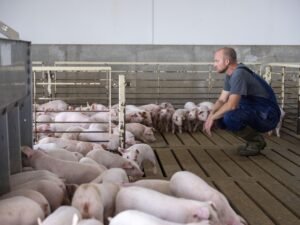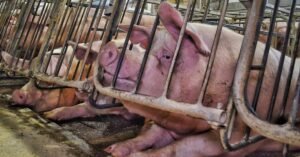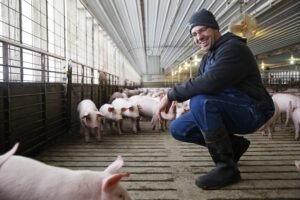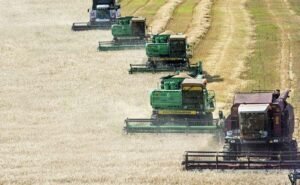The most recent swine inventory assessments have made things clear: U.S. pork output is expected to shrink in 2025. The adjustment isn’t dramatic, but it signals a pivotal period for the industry—forecast production has been reduced by roughly 350 million pounds compared to just a month ago. With total output now slated to hit approximately 28.1 billion pounds for the year, according to USDA’s April outlook, stakeholders are recalibrating expectations well in advance.
First quarter data already set the tone, demonstrating that federally inspected pork production reached around 6.9 billion pounds—a quantity marking a two percent contraction relative to last year’s numbers. Interestingly, while finished hog weights recorded slight increases (offsetting some lost volume from lower animal counts), overall head counts moving through processing were lighter than anticipated back in September when inventories were projected. In effect, heavier average dressed weights—around 217 pounds per carcass this cycle—couldn’t fully compensate for leaner supplies of market-ready animals.
A rather nuanced aspect emerges when juxtaposing present figures with preceding estimations: projections for Q2 pork production had previously implied an increase over last year of more than two percent; however, after parsing new March inventory data and culling through current slaughter rates, analysts now expect only about a one percent uptick versus prior periods. Such volubility makes near-term forecasting fraught with difficulty.
It isn’t solely domestic factors exerting pressure on these forecasts; international trade developments contribute significantly as well. Pork exports from the U.S., once pegged at even more robust levels several quarters ago, are now trimmed downwards—a mere seven billion pounds is currently anticipated for overseas shipment throughout all of 2025 (which would be about two percent shy of last year’s export tally). This reduction springs largely from trade-related uncertainty: shifting global tariffs following proposed governmental policy changes pose considerable risk not just abroad but right back home at packing plants and farm gates alike.
Although demand inside the country remains fairly relentless—the ubiquitous bacon-and-egg breakfast survives macroeconomic storms—it cannot entirely counterbalance diminished foreign sales or tighter supply chains caused by erratic crop yields and logistical dilemmas originating far beyond North American borders. Domestic prices reflect both scarcity and unpredictability: February saw live-equivalent prices (for those archetypal “51–52% lean” animals) jump almost sixteen percent year-over-year before settling into an uncertain equilibrium closer to $61 per hundredweight forecast on average come harvest time next autumn.
Paradoxically though supply is scrunched in some regions (especially EU member states grappling with African Swine Fever flare-ups), other markets like China are reporting slightly greater productivity and thus softer local pricing pressures as their own inventories recover post-pandemic disruptions. If input costs such as feed grain remain below historic averages—as many novel feeders expect amid recently steady global commodity trends—some efficiency gains could manifest domestically despite external constraints.
Margin volatility challenges processors on another front altogether—with wholesale pork carcass values recently rising nearly ten percent over comparable intervals last season—and leaves forward contracts exposed if blockages reappear downstream due to either weather disturbances or labor interruptions during peak slaughter months.
Recent decades have seen cycles wherein reduced sow herds spurred later expansion phases driven by higher returns—however that scenario seems less likely this time since numerous producers remain reticent about any large-scale buildout given murky prospects across both political channels (tariff threats flank one horizon) and agricultural inputs like soybeans which could spike should peace break out unexpectedly in eastern Europe leading Ukrainian crops back onto world markets overnight. Oddly enough though productivity climbs modestly worldwide this coming year according to Rabobank estimates—even if regional surpluses might accumulate faster than actual consumption requires over shorter timeframes.
Yet among all these intricacies one thing becomes evident: today’s swine production complex balances precariously between shifting inventories and capricious geopolitics; yesterday’s abundance provides little guarantee against tomorrow’s shortfall unless producers adapt adeptly—which many have shown they can do precisely because volatility has long been their truest companion.
If there was ever a season demanding vigilance—with unpredictable price oscillations echoing uncertain packer procurement strategies across scattered producing centers—it is certainly upon us now although most analyst teams seem convinced that barring unforeseen disruption fourth quarter figures may rebound toward traditional thresholds once delayed farrowings work themselves through processing schedules later this fall; alternatively further contraction might yet surprise everyone involved before next spring finally brings clarity no one wanted so late in the game.






